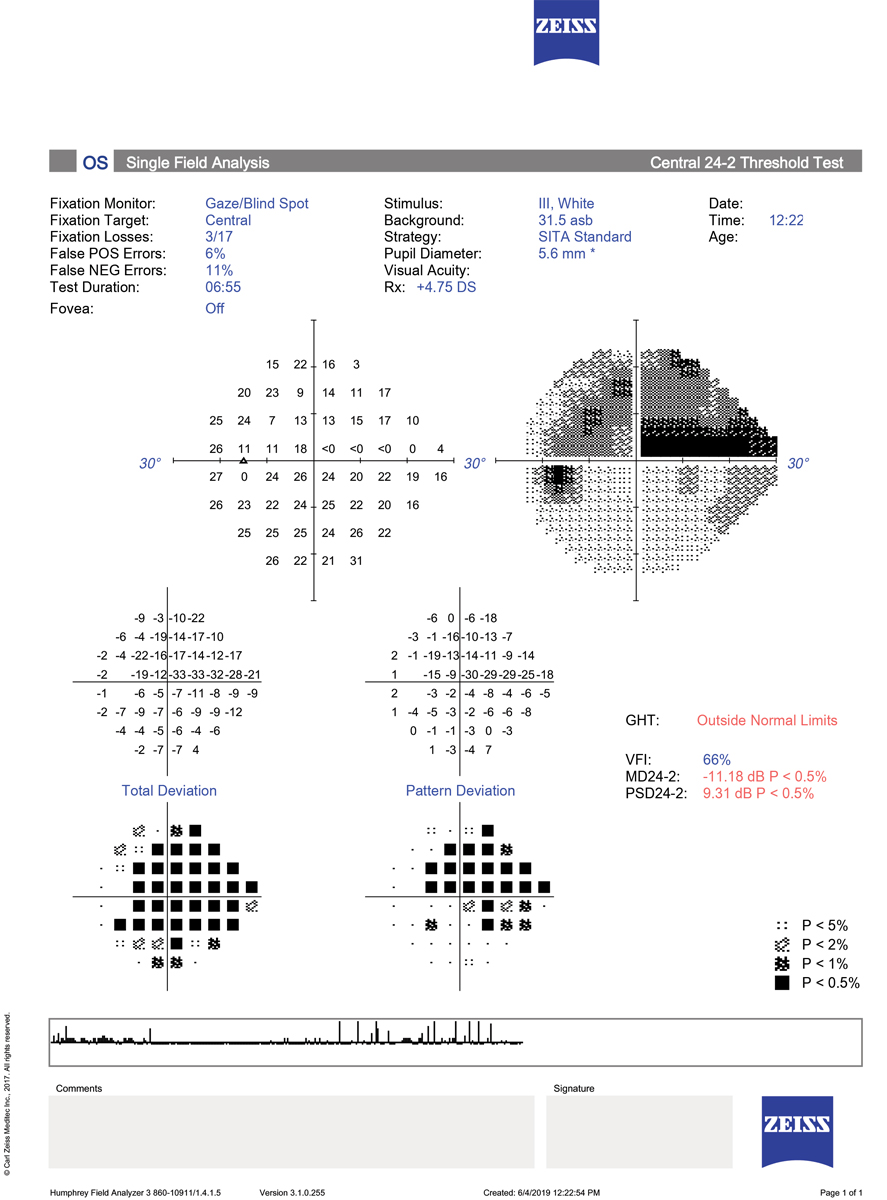 |
| 24-2 visual field tests may not be the best choice for detecting early signs of glaucoma, study finds. Photo: Danica Marrelli, OD. Click image to enlarge. |
In eyes with early glaucoma (i.e., 24-2 mean deviation >-6dB), researchers recently found that the 24-2 guided progression analysis (GPA) missed progression seen with OCT and exhibited a relatively high rate of false positives.
The cross-sectional study included 99 eyes from 99 individuals, including 70 suspect or early glaucomatous eyes and 29 healthy controls. All eyes had at least four OCT and VF test dates over a period ranging from 12 to 59 months. The 24-2 VF tests included two baseline tests and at least two follow-up tests. The two baseline tests were within an average of 5.6 days, and the last follow-up test occurred at least one year after the first baseline visit.
The commercial 24-2 GPA software characterized eyes as “likely progression” (LP) and “possible progression” (PP), both of which were considered to represent progression for this analysis. For a reference standard (RS), three authors graded progression using a combination of a custom OCT progression report and the commercial 24-2 and 10-2 GPA reports.
The RS identified 10 (14%) of the 70 patient eyes and none of the control eyes as progressing. The 24-2 GPA identified 13 (19%) of the 70 patient eyes as progressing (PP or LP).
However, it correctly classified only 4 (40%) of the 10 RS progressors. All six of the RS progressors missed by the 24-2 GPA showed progression in the macula. In addition, the 24-2 GPA identified two (7%) of the 29 control eyes as progressors, as well as nine (31%) eyes without progression based on the RS.
“The results suggest that including OCT and/or 10-2 VFs should improve detection of progression,” the study authors concluded.
Hood DC, La Bruna S, Tsamis E, et al. The 24-2 visual field guided progression analysis can miss progression of glaucomatous damage of the macula seen with OCT. Ophthalmol Glaucoma. March 28, 2022. [Epub ahead of print]. |

